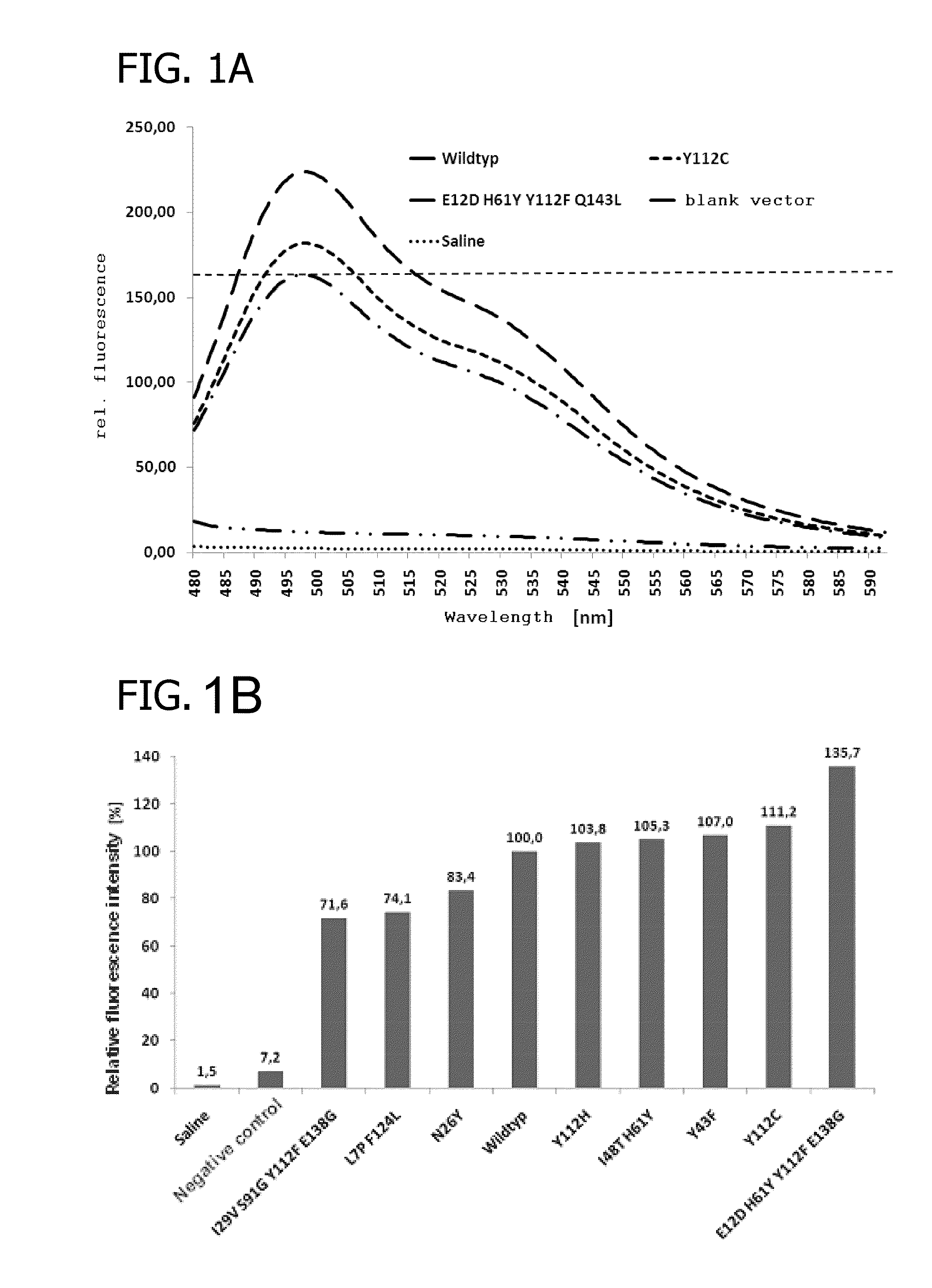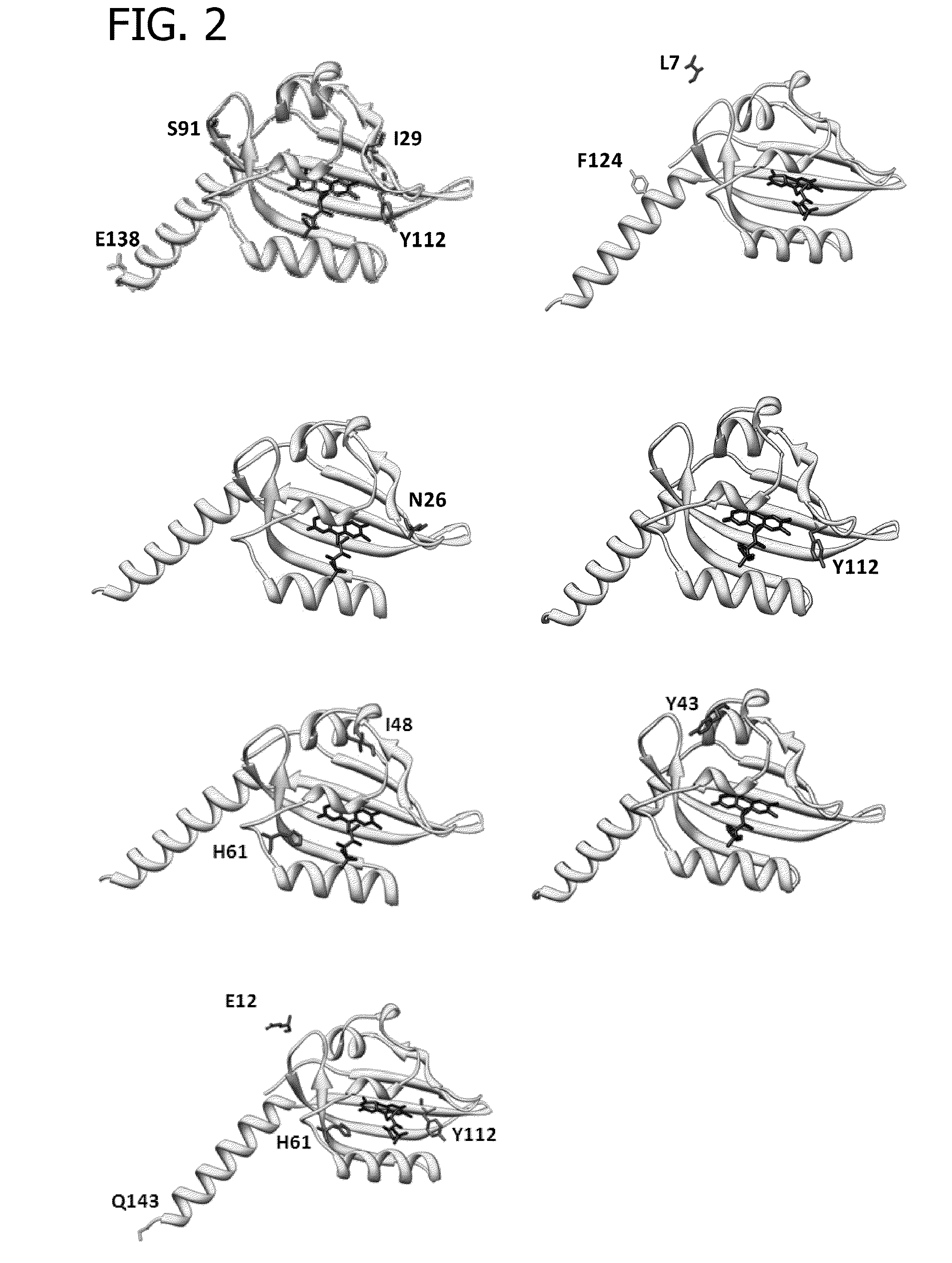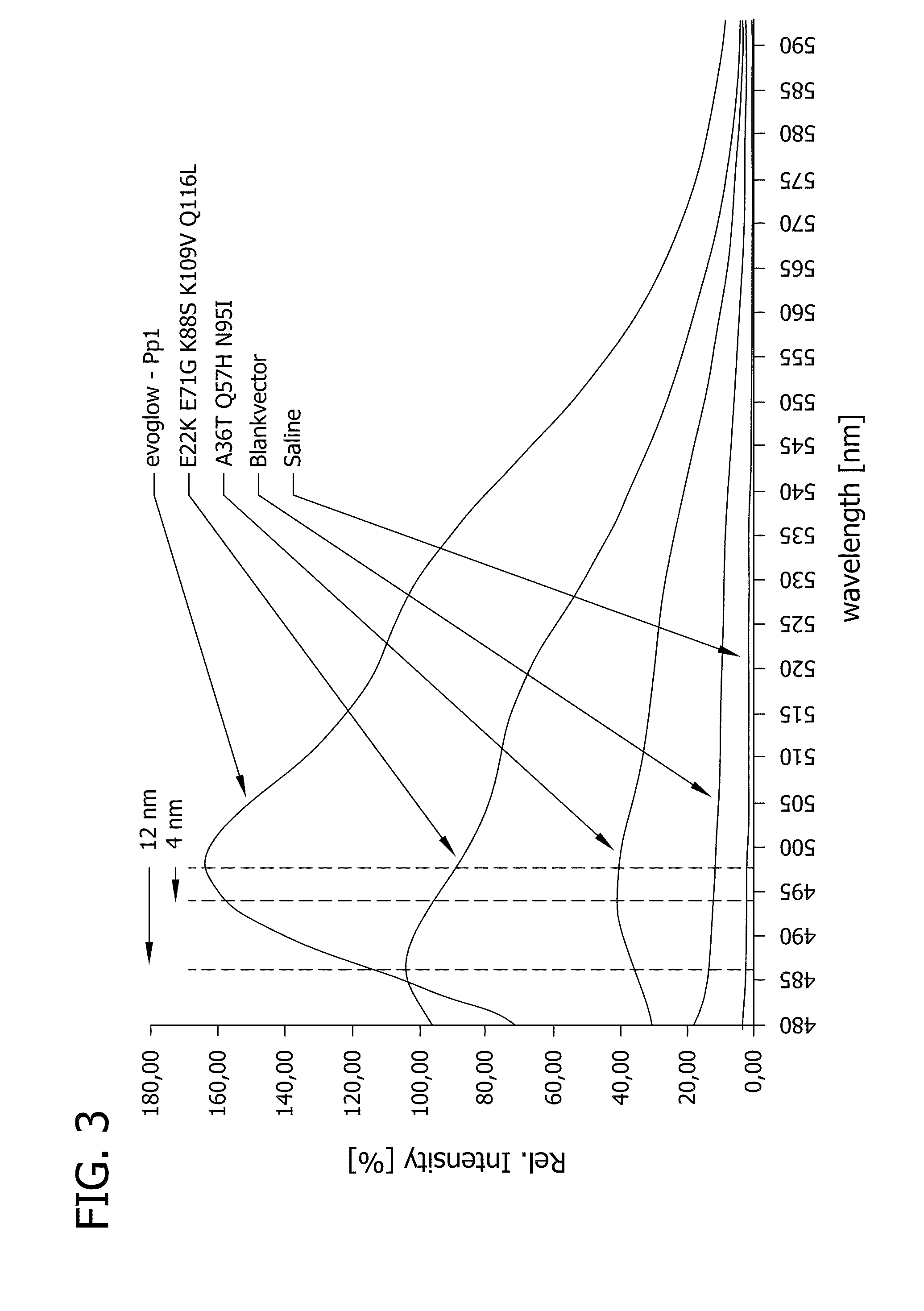Fluorescent proteins, their production and use
a technology of fluorescent proteins and fluorescent proteins, applied in the field of fluorescent proteins, can solve the problem of inability to differentiate proteins, and achieve the effect of improving quantum yield and/or shifting excitation
- Summary
- Abstract
- Description
- Claims
- Application Information
AI Technical Summary
Benefits of technology
Problems solved by technology
Method used
Image
Examples
example 1
Generating the Mutagenesis Library of the Genes Coding for the Fluorescent Proteins
[0062]Mutagenesis of the genes coding for the fluorescence reporters occurred by error prone PCR. For this, random point mutations were introduced into the wild-type gene by utilizing Taq polymerase and further additives such as MnCl2 and unphysiologically high concentrations of MgCl2. The primers were chosen in such as way that they flanked the gene and added recognition sequences for the restriction enzymes Nde1 and Sac1 into the PCR products.
example 2
[0063]The resulting ep-PCR products were cloned into vector pRhoKHi-2 (FIG. 10) by ligation. For this purpose, both the vector and the PCR products were hydrolyzed with the restriction endonucleases Nde1 and Sac1. After inactivation of the enzymes the vectors were ligated with the PCR products and competent E. coli DH5α cells were transformed with them.
example 3
Screening the Libraries for Improved Variants
[0064]The screening for improved protein variants with regard to their brightness was performed with the help of a UV cabinet (Camag). The resulting transformants were photographed with a digital camera directly on the LB agar plate in the blue light box with excitation at a wavelength of 366 nm. Analysis of the brightness of the colonies on the plate occurred based on these pictures with the program ImageJ and the plug-in “3D Surface Plot”. This plug-in allows for the visualization of brightnesses of a picture as a graphic representation of height topologies.
[0065]The determination of the color of the cultures also occurred in computer-assisted fashion with the program ImageJ after documentation of the colonies with a digital camera. For this purpose, the plug-in “3D Color Inspector” was used, which allows for the visualization of the color distributions of a picture in three-dimensional space.
PUM
| Property | Measurement | Unit |
|---|---|---|
| excitation wavelength | aaaaa | aaaaa |
| fluorescence wavelength | aaaaa | aaaaa |
| wavelength | aaaaa | aaaaa |
Abstract
Description
Claims
Application Information
 Login to View More
Login to View More - R&D
- Intellectual Property
- Life Sciences
- Materials
- Tech Scout
- Unparalleled Data Quality
- Higher Quality Content
- 60% Fewer Hallucinations
Browse by: Latest US Patents, China's latest patents, Technical Efficacy Thesaurus, Application Domain, Technology Topic, Popular Technical Reports.
© 2025 PatSnap. All rights reserved.Legal|Privacy policy|Modern Slavery Act Transparency Statement|Sitemap|About US| Contact US: help@patsnap.com



